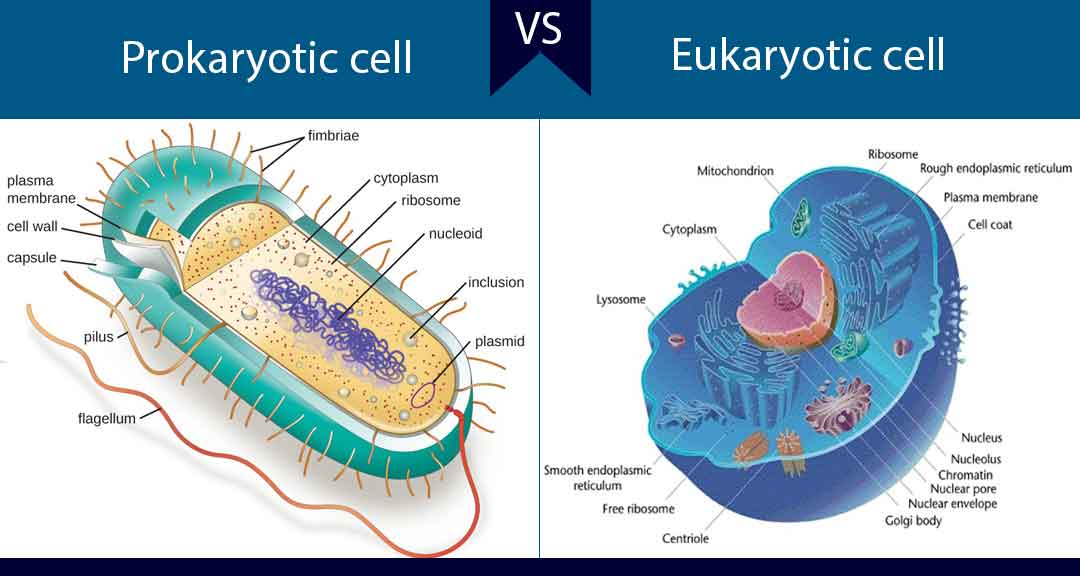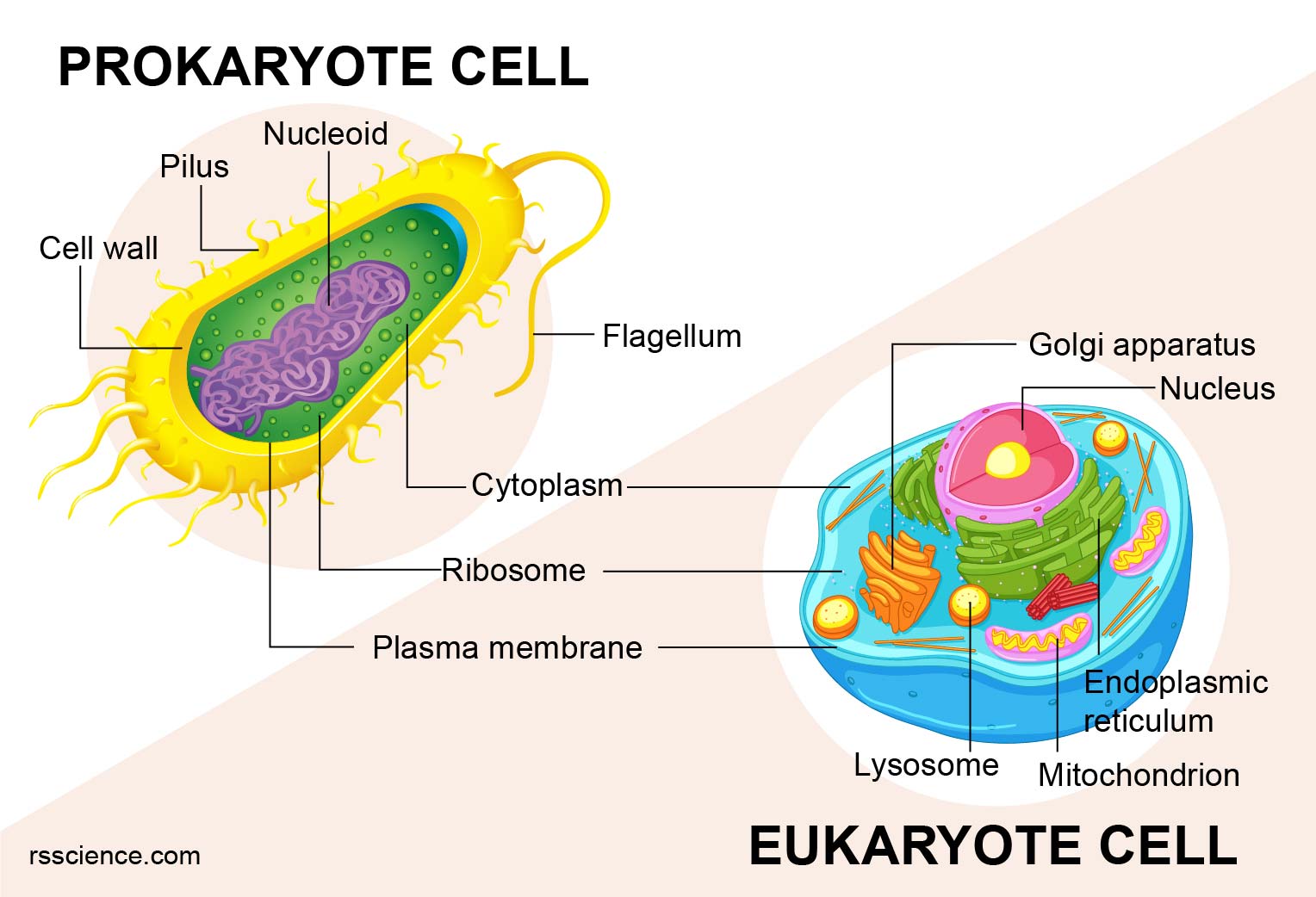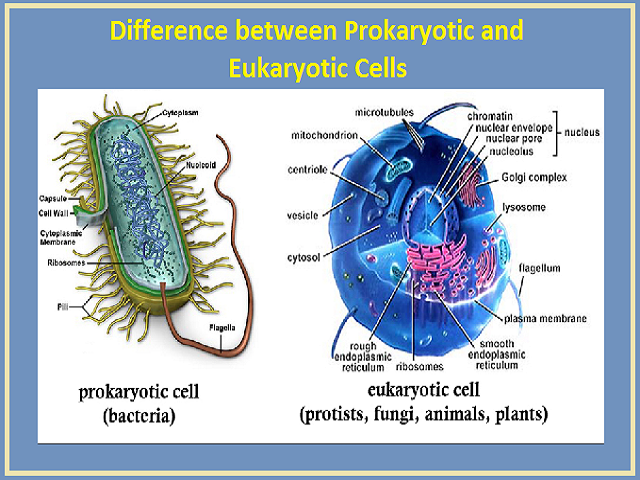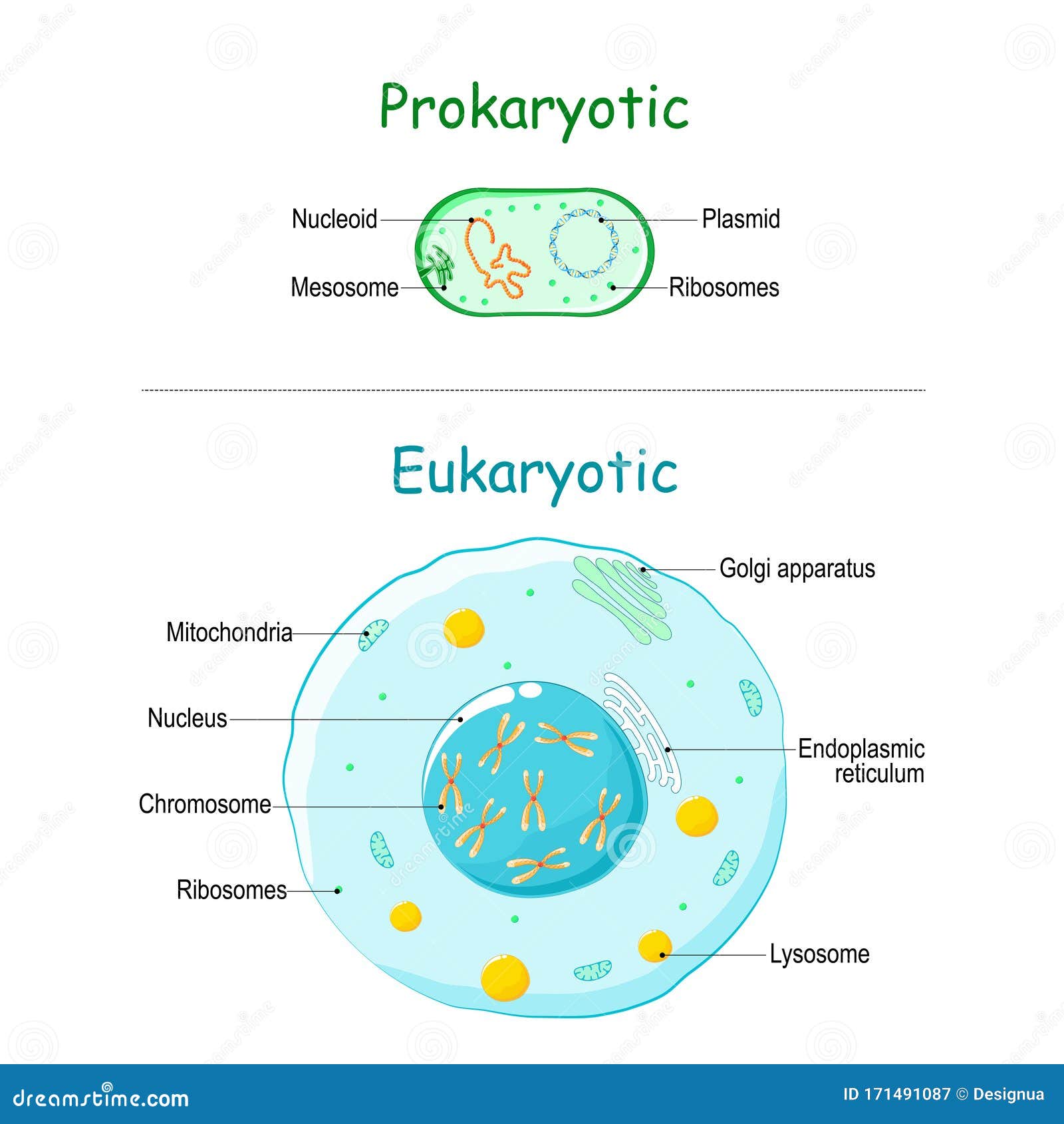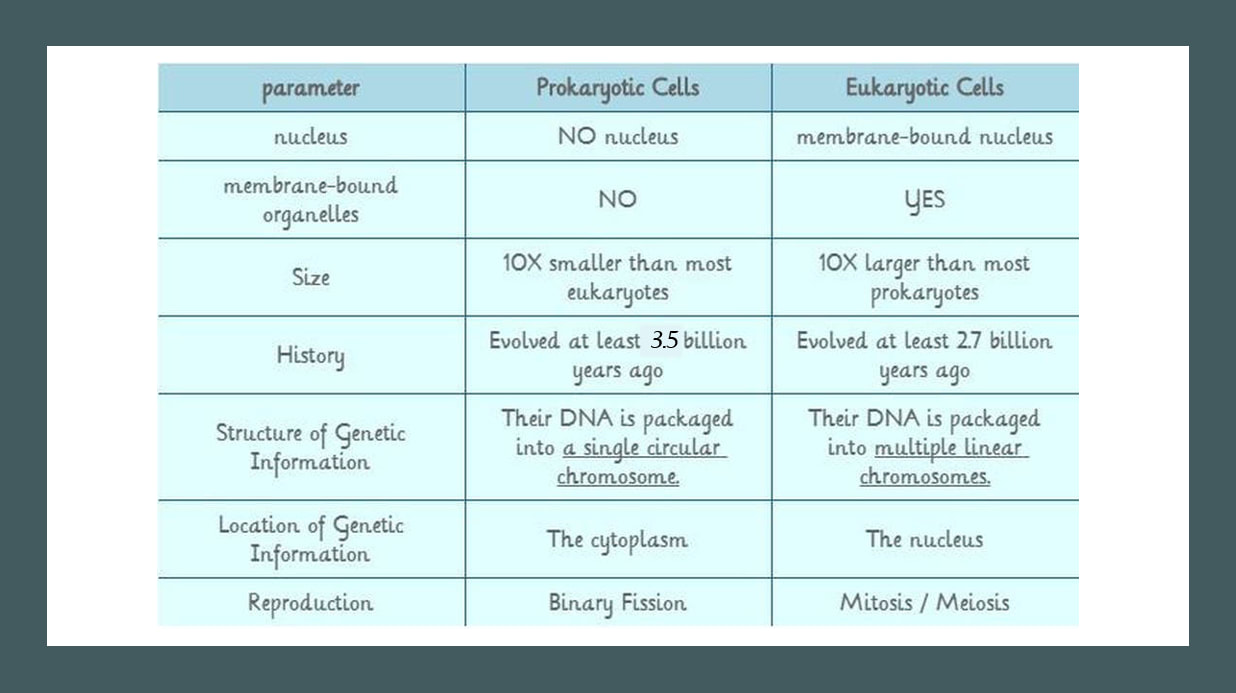Prokaryote Vs Eukaryote Chart
Along with pie charts bar graphs quadrant charts flow charts and a myriad of other tools for visualizing data they provide an effective method to display your data or aid in the process of thinking.
Prokaryote vs eukaryote chart. It has a number of membrane bound organelles. 1 m i c r o n or micrometer μ m is one-thousandth of a millimeter or one-millionth of a meter. DNA in linear arrangement chromosomes DNA associated with histone nonhistone proteins DNA in nucleus surrounded by nuclear envelope Specialized mitotic apparatus involved in nuclear division Contain organelles 0 1Sezi μm.
Eukaryotes key similarities. A typical prokaryotic cell is of a size ranging from 01 m i c r o n s mycoplasma bacteria to 50 m i c r o n s. In spite of the similar overall process of transcription in both prokaryotes and eukaryotes there exists a few fundamental difference between prokaryotic and eukaryotic transcription about which we will discuss in the article.
Eukaryotes include larger more complex organisms such as plants and animals. The cell has a membrane bound nucleus. Two types of cells.
Most prokaryotes are unicellular and are either archaea or bacteria. Prokaryotic cells are comparatively smaller and much simpler than eukaryotic cells. Both prokaryotic and eukaryotic cells have similar chemical compositions.
If you continue browsing the site you agree to the use of cookies on this website. Eukaryotes Size of cell Typically 02-20 m m in diameter. Eukaryotes true nucleus.
Prokaryotes are organisms made up of cells that lack a cell nucleus or any membrane-encased organelles. Prokaryotic cells are extremely small much smaller than eukaryotic cells. Structure Of Life Interactive Notebook Pages Print And Digital Versions Science Cells Interactive Notebooks Science Lessons Eukaryotic Cell Vs Prokaryotic Cell Difference And Comparison Diffen Prokaryotic Cell Eukaryotic Cell Prokaryotes Prokaryotic And Eukaryotic Cells Venn Diagram Activity In 2021 Eukaryotic Cell Venn Diagram Venn Diagram.
Chart of Prokaryotic vs Eukaryotic cells. Cell lacks all membrane bound organelles. Now let us study the difference between Prokaryotic and Eukaryotic Cells.
Typically 10-100 m m in diameter. Most eukaryotes lack flagella due to the presence of cell walls but a few have them for example a sperm cell. Reproduction happens through the process of binary fission.
Prokaryote Cells And Eukaryote Cells SlideShare uses cookies to improve functionality and performance and to provide you with relevant advertising. Both prokaryotic and eukaryotic cells follow the Cell theory. The other defining characteristic of prokaryotic cells is that it does not possess membrane-bound cell organelles such as a nucleus.
The genetic material DNA is not being enclosed by a particular membrane to form a nucleus but it lies freely in the cytoplasm part. Scientists speculate that these organisms gave rise to the eukaryotes. Size is 01- 50 um.
A eukaryotic cell consists of chitin cellulose or pectin in its cell wall. Most prokaryotic cells are composed of peptidoglycans in either more or less quantity. Only eukaryotes have membrane-bound organelles and a nucleus.
The differences between eukaryotic and prokaryotic transcription are given below. Prokaryotic vs Eukaryotic Transcription. Both prokaryotic and eukaryotic cells share similarities in biochemical reactions that are fundamental to all lives.
Nucleus No nuclear membrane or nucleoli nucleoid True nucleus consisting of nuclear membrane nucleoli. In addition the DNA is less structured in prokaryotes than in eukaryotes. Their cells are smaller than eukaryotic cells.
Prokaryotes divide via using binary fission while eukaryotic cells divide via mitosis. This means the genetic material DNA in prokaryotes is not bound within a nucleus. Size is 5-100 um.
Presence of Flagella Eukaryotes. In prokaryotes DNA is a single loop while in Eukaryotes DNA is organized into. Prokaryotes Both Prokaryotes Eukaryotes and Eukaryotes No Nucleus Cells have a nucleus Small and simple Cells have organelles No organelles Can be unicellular or Are very abundant Have ribosomes multicellular All are unicellular Have DNA Have a cytoskeleton Cells have a sticky capsule Have cytoplasm Some have cilia All cells have cell walls Have.





